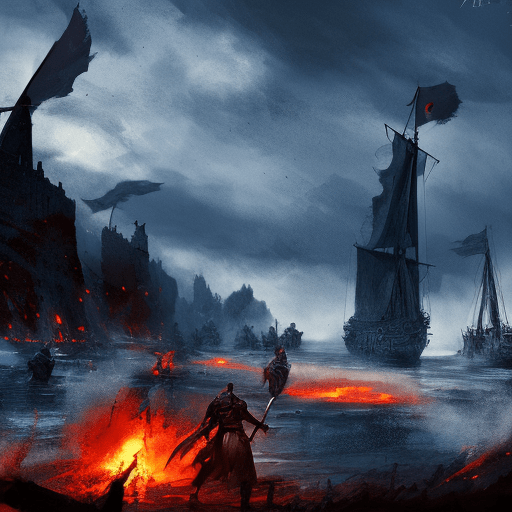The Conquest of Gaul: Julius Caesar’s Military Campaigns
Julius Caesar’s “The Conquest of Gaul” is a gripping account of his military campaigns in ancient Gaul, providing a detailed and insightful look into the strategies, battles, and political maneuverings that ultimately led to Rome’s domination of the region. Through his vivid descriptions and firsthand experiences, Caesar offers readers a comprehensive understanding of the challenges he faced, the tactics he employed, and the impact his conquest had on both Gaul and Rome.
The Roman Invasion of Gaul
Caesar begins his narrative by describing the political landscape of Gaul and the threat it posed to Rome. He outlines the various tribes that inhabited the region, their alliances, and their constant warring with one another. Recognizing the opportunity to expand Rome’s territory and secure its borders, Caesar decides to launch a military campaign to conquer Gaul.
With a well-disciplined and battle-hardened army at his disposal, Caesar embarks on a series of military expeditions, engaging in numerous battles and sieges against the Gallic tribes. He showcases his strategic brilliance by adapting to the unique terrain and employing innovative tactics to overcome the Gauls’ fierce resistance. Caesar’s military genius is evident in his ability to exploit weaknesses in the enemy’s defenses, utilize cavalry effectively, and employ siege warfare to capture Gaulish strongholds.
The Gallic Resistance and Political Intrigues
Throughout his conquest, Caesar encounters formidable resistance from Gallic leaders such as Vercingetorix, who unites the tribes in a desperate attempt to repel the Roman invaders. Caesar skillfully navigates the complex web of Gallic politics, forming alliances with some tribes while subduing others through military force or diplomacy. He also faces internal challenges within his own army, dealing with mutinies and maintaining discipline among his troops.
As Caesar’s campaigns progress, he provides fascinating insights into the social and cultural aspects of Gaulish society. He describes their religious practices, their tribal customs, and their warrior culture. Caesar’s observations shed light on the stark differences between Roman and Gallic societies, highlighting the clash of civilizations that occurred during the conquest.
The Legacy of Caesar’s Conquest
Caesar’s conquest of Gaul had far-reaching consequences for both Rome and Gaul. The Roman Empire expanded its borders, gaining valuable resources and wealth from the conquered territories. The conquest also solidified Caesar’s position as a military and political leader, paving the way for his eventual rise to power in Rome.
Key Takeaways:
- Julius Caesar’s “The Conquest of Gaul” provides a detailed account of his military campaigns in ancient Gaul.
- Caesar showcases his strategic brilliance and adaptability in overcoming the Gauls’ resistance.
- The conquest had significant political and cultural implications for both Rome and Gaul.
In conclusion, “The Conquest of Gaul” offers readers an engaging and informative account of Julius Caesar’s military campaigns. Through his vivid storytelling and astute observations, Caesar provides a comprehensive understanding of the challenges, triumphs, and lasting impact of Rome’s conquest of Gaul. As readers delve into the pages of this historical masterpiece, they are transported back in time to witness the epic battles and political intrigues that shaped the destiny of ancient Gaul and the Roman Empire.
“I came, I saw, I conquered.” – Julius Caesar












